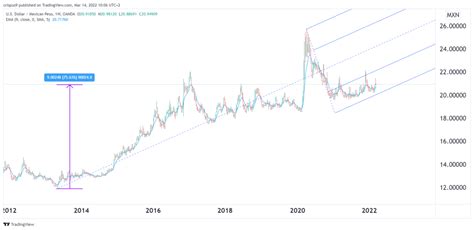Introduction:

As healthcare advances rapidly within the next decade, it’s crucial for men to stay informed about their evolving health needs. This comprehensive guide will explore the latest trends, technologies, and strategies to empower men with knowledge and proactive approaches to maintaining optimal health in 2025.
1. The State of Men’s Health
According to the Centers for Disease Control and Prevention (CDC), men face unique health challenges due to lifestyle factors, genetics, and societal norms. By 2025, it’s estimated that:
- Cardiovascular disease will continue to be the leading cause of death among men, accounting for 30% of deaths.
- Cancer will remain a significant threat, with prostate cancer being the most common among men.
- Mental health concerns will rise, with depression and anxiety affecting an increasing number of individuals.
2. Innovative Technologies for Men’s Health
Advancements in technology are revolutionizing healthcare for men. In 2025, expect:
- Telemedicine: Remote consultations with healthcare providers will become increasingly accessible, providing convenient and personalized healthcare.
- Wearable health devices: Smartwatches and fitness trackers will monitor vital signs, track activities, and provide insights into overall health.
- Artificial intelligence (AI): AI-powered tools will assist healthcare professionals in disease diagnosis, treatment selection, and personalized care.
3. Proactive Health Strategies
Men can proactively improve their health by implementing the following strategies:
- Regular screenings: Stay up-to-date with recommended medical tests to detect potential health issues early on.
- Healthy diet: Focus on consuming nutrient-rich foods such as fruits, vegetables, lean proteins, and whole grains.
- Exercise: Engage in regular physical activity to maintain a healthy weight, reduce stress, and improve cardiovascular health.
- Sleep: Aim for 7-9 hours of quality sleep each night to support overall physical and mental well-being.
- Stress management: Develop coping mechanisms and techniques to effectively manage stress levels.
4. Mental Health and Men
Mental health plays a crucial role in overall well-being. Men often face stigma and barriers to seeking help for mental health concerns. In 2025, these barriers will gradually diminish, and men will become more comfortable:
- Seeking professional help: Accessing counseling, therapy, or support groups to address mental health issues.
- Engaging in self-care: Practicing mindfulness, meditation, or other activities that promote emotional well-being.
- Building social connections: Maintaining strong relationships with family, friends, and community members to provide support and reduce isolation.
5. The Future of Men’s Health
The future of men’s health is promising. By embracing technology, adopting proactive strategies, and addressing mental health concerns, men can strive for improved health outcomes.
- Personalized medicine: Tailored treatments based on individual genetic makeup and lifestyle factors will become increasingly prevalent.
- Precision diagnostics: Advanced testing methods will enable precise disease diagnosis and more effective treatment interventions.
- Digital health: Digital health platforms will empower men with access to health information, support, and self-management tools.
Conclusion:
Maintaining optimal health in 2025 and beyond requires a proactive approach from men. By staying informed, implementing healthy habits, and seeking support when needed, men can create a healthier future for themselves and their families. As healthcare continues to evolve, it’s essential for men to remain engaged and empowered to achieve their health goals.
Tables for Him and Her Health
Table 1: Common Health Conditions and Screening Recommendations for Men
| Health Condition | Age Group | Screening Recommendation |
|---|---|---|
| Cardiovascular disease | 40-75 | Blood pressure, cholesterol, angiogram |
| Prostate cancer | 50+ | Prostate-specific antigen (PSA) test |
| Colorectal cancer | 50+ | Colonoscopy |
| Testicular cancer | 15-50 | Self-examination |
| Lung cancer | 55+ | Low-dose computed tomography (LDCT) scan |
Table 2: Tips for Improving Diet and Nutrition
| Tip | Benefits |
|---|---|
| Focus on fruits and vegetables | Provide antioxidants, vitamins, and minerals |
| Choose lean proteins | Support muscle growth and repair |
| Limit processed foods | Reduce sodium, unhealthy fats, and added sugars |
| Hydrate adequately | Essential for overall health and bodily functions |
| Read food labels | Make informed choices and avoid hidden unhealthy ingredients |
Table 3: Benefits of Regular Exercise
| Type of Exercise | Benefits |
|---|---|
| Aerobic (e.g., running, swimming) | Improves cardiovascular health, burns calories |
| Resistance (e.g., weightlifting) | Builds muscle mass, strengthens bones |
| Flexibility (e.g., yoga, stretching) | Reduces risk of injuries, improves range of motion |
| Balance (e.g., tai chi, Pilates) | Enhances stability and coordination |
| Mind-body (e.g., meditation, mindfulness) | Reduces stress, improves mental well-being |
Table 4: Strategies for Maintaining Mental Health
| Strategy | Benefits |
|---|---|
| Seek professional help | Access evidence-based treatment for mental health concerns |
| Practice mindfulness | Reduces stress, improves emotional regulation |
| Cultivate social connections | Provides support, reduces isolation |
| Engage in self-care | Promotes well-being, reduces risk of burnout |
| Develop coping mechanisms | Manages stress and challenges effectively |



